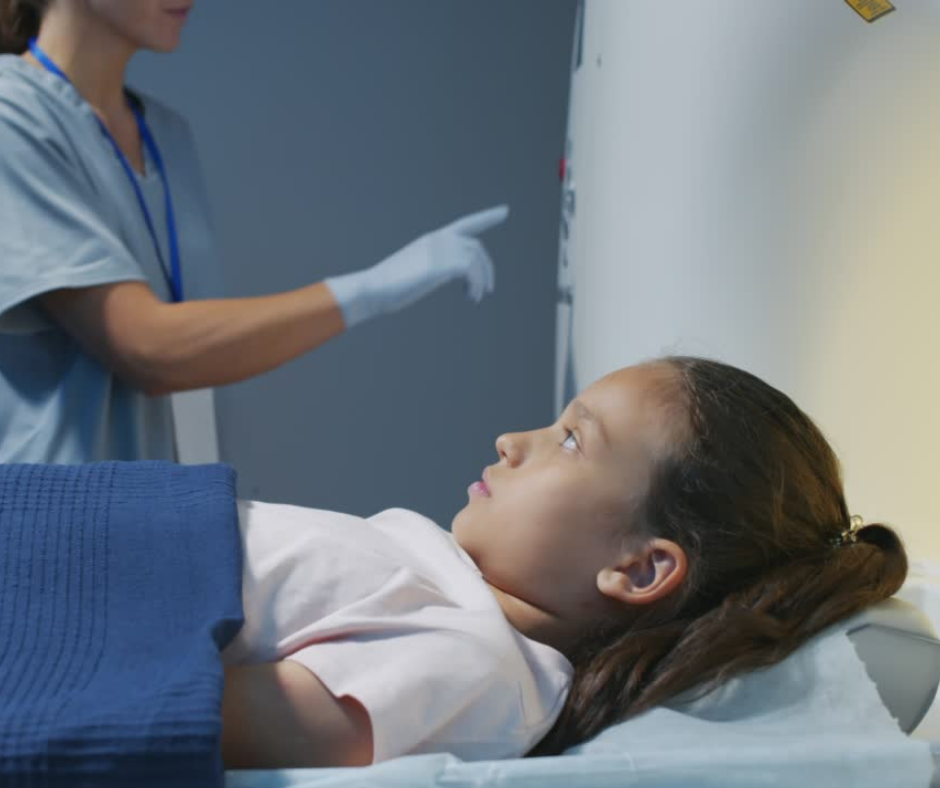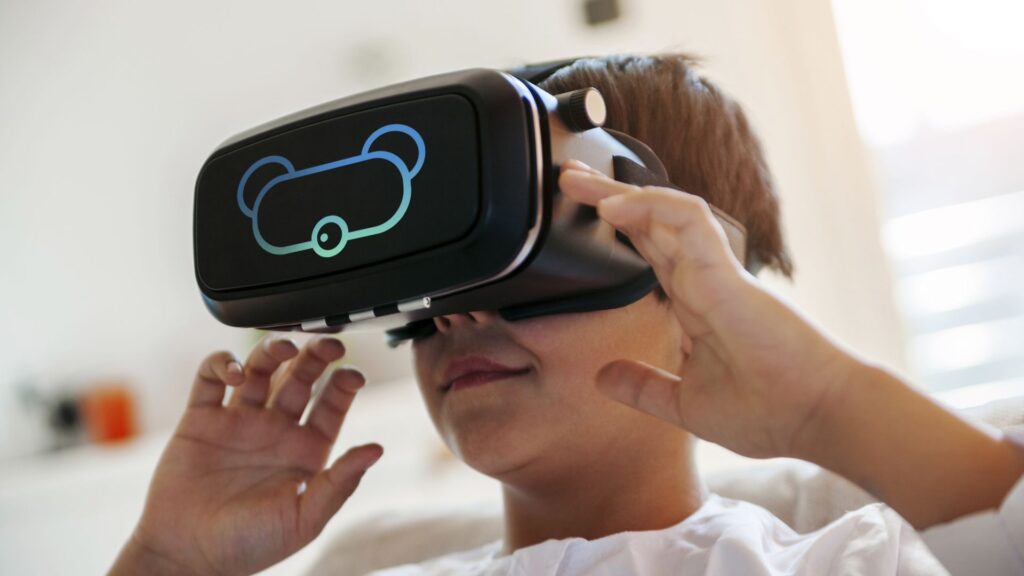Children can be a bundle of squirming energy.
While all of that energy can be adorable on the playground, in an MRI machine it can delay receiving critical medical diagnoses. A child’s natural squirming tendency can result in unclear MRI data, resulting in wasted time for the family and a wasted MRI slot.
One common solution for getting clear MRI data is to sedate the child.
However, as you most likely know, sedation is not only:
- Costly for the hospital because it requires an anesthesiologist (general or specialized).
- Not a family-friendly option as sedation requires many hours of preparation by both the parent and the child.
- Although sedation is considered safe it does not have a nonzero risk factor and has a potential for liability.

This article will discuss the many options available for possibly reducing the need for sedation with pediatric MRIs. Whether you’re a hospital looking for a cost effective alternative to sedation, or a parent researching the options available for your child, I hope this article will help.
In this article we’ll be discussing the following opportunities for making MRIs easier for kids:
- Mock MRI scanners
- Ready Teddy
- Stimulus during the MRI
- Home-based options
Mock MRI Scanners
For decades, mock MRI scanners have been the go-to method for helping to reduce child sedation. Typically smaller in size than an actual MRI machine, mock MRIs are intended to look similar to the fully-functional machine, and are for demonstration purposes.
The hope is that it will help the child become familiar with the process of getting a scan and prepare them for seeing the fully-functional machine . Some larger mock MRI scanners, also known as MRI simulators, allow the child to lay down and enter the tunnel much like a real MRI machine. Other mock MRIs, such as decorated play tunnels, are stationary and must heavily rely on the child’s imagination.
Pros:
- By showing children an object similar to the MRI scanner, pediatric patients can familiarize themselves with the MRI machine and with the process of getting a scan in an environment that is calm and less intimidating.
- Because this option has been around for a long time it may be a good choice for hospitals that do not have the inclination to try new technology.
- Since they are not functioning MRI machines, mock MRIs often require little technological knowledge to run.
- They provide a tangible way for children to see what an MRI machine looks like and what the process will be like.
Cons:
- Many children become alarmed when seeing the actual MRI machine, as the fake ones are generally smaller. While fake ones can prepare children for some aspects of getting a scan, the disconnect between make-believe and reality can be unsettling for the children who created literal expectations. For this reason, many hospital staff prefer to bypass the fake MRIs and simply show the child the real machine.
- Mock MRI machines are often large, requiring their own special room. The cost-benefit of hospital economics often leaves this option mute.
- To an informed parent it may seem like the hospital is not investing in up-to-date technology.
- Mock MRIs most often require supervision by a staff member.
Ready Teddy
Ready Teddy is a cutting edge opportunity to reduce the likelihood of child MRI sedation. One of its founders was an MRI researcher, and understood first hand the issues involving pediatric MRIs. Another of its founders has a background in media and entertainment. Together they created a child-centered virtual reality introduction to MRIs.
Through the VR image of a teddy bear, Ready Teddy walks children through the experience of getting an MRI, through first-person POV.
Additionally, during minigames, Ready Teddy tracks the patient’s head motion to help train children on how to stay still.

Pros:
- Cutting edge Virtual Reality technology, which can help parents feel at ease.
- Significantly lower in price than mock MRI machines.
- Easy to train clinicians, or even parents, to use. The attending adult will need enough familiarity with VR devices to place the headset on the child.
- The real time training games teach children to stay still within the threshold of a quality scan.
- Easy to disinfect.
Cons:
- May not be appropriate for hospitals that are reluctant to try new technology.
- Parents and clinicians who do not have real-life experience with virtual reality may be skeptical or intimidated and may require additional training.
Stimulus during the MRI
Hospitals and other organizations sometimes use stimuli during the MRI to help reduce a child’s squirming. Options range from the super low-tech, such as playing music over the loudspeaker, to high-tech, such as devices that play stereoscopic video and 3D images.
Pros:
- Many options available.
- Depending on the media used, it can provide a source of familiarity or comfort.
Cons:
- Reactive solution versus preventative solution.
- Can be costly, with a 3D image option costing over $40,000.
- Will add to the child’s auditory or visual stimulus, possibly overwhelming sensitive children.
Home-based options
Rather than relying on staff to acclimate the child to an MRI machine and the process of getting a scan, hospitals and other organizations may rely on the parent or caregiver to desensitize the child.
Sometimes the desensitization is through a recording of the sounds of an MRI machine which the parent can play for the child in a familiar setting, such as at home. Other options include books that detail the process, like https://donutthatroared.com/, or videos that can be played at home showing the inside of an MRI machine.
Pros:
- Many options available.
- Often low-cost.
Cons:
- Not parent-friendly as it requires the parent to have the time to do the desensitization preparation.
- The caregiver may not have the necessary communication skills to calm and adequately prepare the child.
- May require the organization to continually purchase and store stock, such as books.
An MRI scan may be critical for a child’s life and well being, but a kid’s natural tendency to squirm and fidget can hamper receiving a clear scan. Fortunately there are many options available for both organizations and individuals to help a child receive an MRI scan without sedation. Ranging from low-tech play tunnels, to cutting-edge solutions like Ready Teddy, today’s children are in a much better position to get a clear scan without the risks inherent in pediatric sedation.
